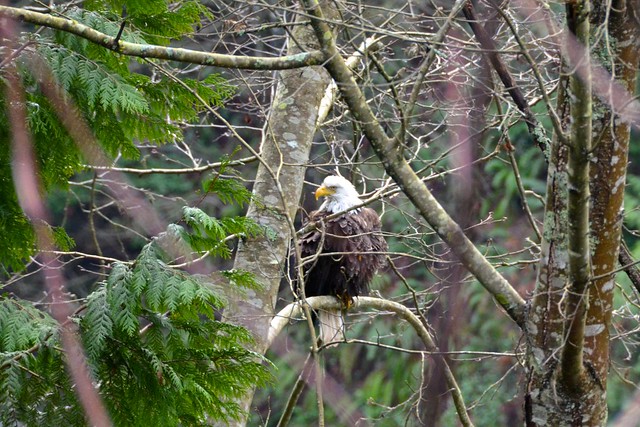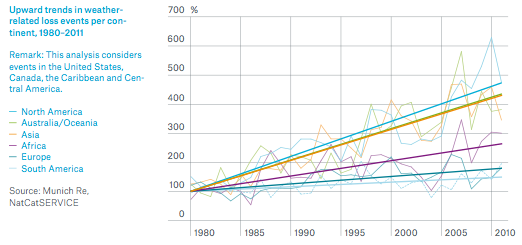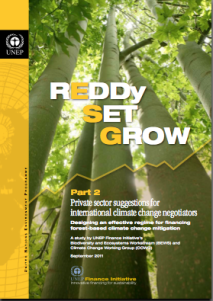An Open Letter to US Interior Secretary Jewell on the Preservation of the Wild
August 18, 2015 Leave a comment
In response to the recent call by the Wilderness Society for people to write to US Interior Secretary, Sally Jewell, to preserve America’s wildest spaces, in particular from industrial development such as energy drilling, I have written and sent the open letter below. It is rather rambling, but espouses many of the points I’ve made over the years on this blog of the importance of the non-economic aspects of the ecosystem services of nature such as the cultural and health services as well as the critical life support regulatory functions that these systems provide. This speaks to the importance of preserving wild systems that is beyond economic valuation and about maintaining the wild biotic processes that have maintained the chemical and physical balances of our planets life support systems from local to global scales.
The Letter
Dear Secretary Jewell,
I know I am not from the United States (US), but the US can and does serve as a world leader on many fronts, and the world needs influential and powerful environmental leaders to show how environmental management can and should be done—turning theoretical best practices, informed by quality science, into reality. I am also writing to you from an ecological systems perspective merged into the notion of regulatory ecosystem services, which is not often voiced (more often you hear about the natural capital/economic valuation aspects of ecosystem services), so I hope you will consider this letter.
It is only since around the 1960’s that work in Earth and atmospheric science started to lead to a scientific paradigm shift of the world as a complex and interconnected system (Lovelock gives a good review of this in his initial book on the Gaia Hypothesis, which may sound hoaky, but the title is just a nod to the ancient Greeks in name, but overlies some solid systems science). In this Earth system, we have come to observe that humans are not just subject to large physical drivers (like things like Earth and solar (Milankovich) cycles and volcanism that help to shape climate), but we humans are also, collectively, drivers and shapers of the environment ourselves from local to global scales. Now that there are so many of us roaming the Earth with population growth, and now that we are so efficient and effective in conducting industrial processes upon the land, we need to improve our rules of engagement with Earth systems so that we don’t sabotage the very ground we stem from.
We have come to see how humans, though miniscule individually, can collectively influence large physical processes on Earth like the climate through things like incremental effects on atmospheric and oceanic chemistry, as well as incremental changes to land use. This paradigm shift is starting to make its way into human spheres like the newish field of ecological economics and our notions of how to do conservation (like the work on planetary boundaries by the Stockholm Resilience Center: http://goo.gl/w7MU3p). This is great, but there is urgency to take what we know from science and better risk manage our Earth systems, for, with our growth over the last 100 years in population and industrial capacity, we are affecting Earth’s physical and ecological systems at an unprecedented rate in history.
One of the areas where not only humanity, but all the biological systems of the Earth, urgently need help, is from environmental regulators and policy makers, like you. We need you to be informed and be strong to protect wild ecological systems so they can continue not only being beautiful places that speak to our sense of aesthetics, nourishing and healing retreats that increase our health as research is increasingly showing, but also because living systems beyond humanity form a central part of the critical life support system of the Earth.
Thank you for your work to update many of the outdated practices and policies within the US Interior Department. Most importantly, I appreciate your commitment to conservation and recognition that there are places in America that truly are ‘Too Wild to Drill’. I’m not sure what you mean by “wild” exactly, but I will tell you what I mean by wild taken from a paper I recently wrote (here: https://integrales.files.wordpress.com/2014/12/marialavis-humanneedandrighttonature-2014-12.pdf in the glossary at the end), which is a systems perspective on the root of the word stemming from ‘self-willed’, of an ecological system that is complex, self-directed, self-regulating, and autopoetic.
North American ‘wild’ places are not just pretty, or important for traditional conservation reasons, but they are vital systems that help to form the self-regulating fabric of the natural world.
Wild systems stem from an ancient original source beyond human control, and these systems are critical because they help to form the collective Earth biotic system and collective biotic driver of large emergent complex global systems like atmospheric climate and oceanic chemistry, of which some parts of these systems have maintained homeostasis in the face of the forces of entropy for billions of years. A homeostasis that humans are now threatening. The degredation of wild systems is part of this systemic threat that our activities pose to Earth systems. How local wild spaces collectively act to create and help regulate certain global homeostatic mechanisms (like the regulation of oxygen in the atmosphere that wouldn’t even be there without biotic photosynthesis) is still beyond complete human understanding, but obviously of central importance to the continuing of life on Earth.
Now, more than ever, we need to come together as people and as nations, to help ensure that the physical and chemical life support system functionality roles that are inherent in ecosystems are preserved.
What this means to me and to many systems scientists is that we need to preserve spaces—on our land and in our waterways—where wild systems can flourish so that they can continue performing their ancient role of systemic regulation from the local to global scales. This also means that now, more than ever, we need your leadership to ensure others within the agency also understand the broader role these places play in our lives.
Our public lands are where children learn to explore the outdoors and meet science face to face. These are the places we find solitude from the hurried world around us, places we know we can turn to for recreation, hunting and fishing. Places we can turn to for psychological and spiritual recharging. (Please also see my paper for a review of recent research on the importance to human health of natural systems, from nature next door to the wilds.) Our public lands are something we count on to be accessible for years to come. Public lands are also something that we depend on collectively across the Earth to keep the ecological systems fabric functioning. To afford us and future generations these experiences, I encourage you to push for better land protection designations for places that are Too Wild to Drill and encourage this practice not only in Washington, D.C., but also in the local and state decisions out west.
I work as an environmental consultant, writing environmental assessments and advising not only governments and energy companies on energy policy. I’ve been busy doing this job and not done a lot of political work, but what I have learned in my profession is that the existing regulatory environment is not enough to safeguard wild systems against the kinds of growing population and industrial pressures that constantly press to carry forward old ideas such as ‘exploiting’ natural systems for our benefit. We need people like you to lay the groundwork policy for a “full world”, in the words of Herman Daly, to redraw the boundaries of what we safely can and cannot do so that we do not sabotage our own success.
Haven’t we run to the end of the colonialist, exploitative, way of looking at natural systems? Haven’t we had enough of seeing ‘nature’ as an enemy to be conquered. I think that day has come. We have won. But, as they say, watch what you wish for. Humans have wished for mastery over the Earth, and in pursuing this, we may spell our own demise since, despite the claims of geoengineers, we do not really understand how complex and interconnected Earth systems work from local to global scales, and because of this, we need to preserve them, functionally intact. Would navy officers on a submarine seek to exploit their sub to the point of sabotaging their own life support systems? Or, would they do whatever it takes to ensure that the chemical and physical factors that keep them afloat and alive are protected? We need to look at our wild spaces, not just as pretty landscapes or natural resources to be economically exploited, but as vital biotic systems that chemically and physically regulate our environment, and without which, life as we know it would no longer exist. We need to get smart policies going, informed by the best of what we know in science, and we need to push back on special economic interests that look to continue the cycle of exploitation, which has now run its course. We need to lay down the boundaries and be strong to the forces which seek to continue their tradition of success in exploiting the Earth, because there are systemic limits to the Earth’s biotic capacity to regulate. Just as a human can succumb to incremental stresses and have health impacted, so can the wild systems of the Earth be affected through our incremental systemic pressures. Is this a chance we want to take, to keep pushing the bar? What kind of sailor would want to mess around with their oxygen system? I can’t think of any. We need to help re-frame these issues of the preservation of the wild in systems terms. This is defensible science. It is credible and it also make sense with risk management. It doesn’t mean energy drilling is bad, it just means that there are limits to certain kind of activities that the wild systems can bear, and to protect the functioning of these dwindling spaces, we need to have people like you know when it is time to draw the line and say no means no. Enough is enough. And it’s not just about protecting this or that species. It’s about maintaining and protecting our critical life support systems that wild systems collectively make up across the Earth.
Let’s Not Be Victims of Our Own Success
Humans are an incredible species. We have amazing intelligence and capacity. Whether this capacity is designed by some external supernatural agent or evolved is often debated, but is not the point. The point is that we do indeed have this amazing capacity for intelligence, creativity/innovation, and production, and we are using it, but we are using it now in ways that may not only be self-sabotaging, but sabotaging to the ecological fabric of many other living systems on Earth.
Billions of years ago, there was a similar success story of a new type of organism that dramatically affected the Earth and life on this planet. This was the appearance of photosynthesizing cyanobacteria, the first creatures to capture the energy of the sun and turn it into oxygen. The early Earth atmosphere was like reducing, not oxidizing as it is now. That is because of the success of photosynthesizing creatures that metabolically spewed out oxygen in the process. Well, these creatures were much much smaller than us, but they were so successful that they reproduced like mad, and made so much oxygen that they too (like us) started to change the mass balance chemistry of the Earth’s global atmosphere and oceans. And what geological science tells us is that this led to a series of very dramatic extinctions, as evidenced in the banded iron formations. Oxygen was toxic to life back then (and it still has this toxicity, evidenced in how we need antioxidants within human bodily systems to keep us healthy), and as concentrations of O2 built up, it got to the point where the levels of oxygen got to the tipping point where it led to a mass extinction killing off a large section of the biota on Earth, including the photosynthesizing creatures themselves. If this isn’t the definition of an organism being the victim of its own success, I do not know what is. But some of the photosynthesizers lived on, and the process started again, and then again, with extinction events happening over millions of years, until finally organisms (like us metabolically) could breath in the oxygen. This led to a new metabolic dance between the photosynthetic organisms (that emit oxygen) and heterotrophs (that would breath that oxygen and eat organic matter), which led to an emergent planetary mass balance in oxygen levels which has remained relatively stable to this day around 21%.
The reason I’m telling this quick recap of the evolution of photosynthetic creatures, and how that ties into environmental chemistry, is because to me this story reminds me of humans. Photosynthetic organisms were remarkably successful in harnessing the energy of the sun, but they also became victims of their own success. We humans are supposedly more intelligent than cyanobacteria though, so I hope that we can figure out the systems effects of our collective metabolic (energy and natural resources using) success more quickly and take action to prevent not only us, but other living systems around us, becoming victims of our success.
It’s Not About Fighting ‘Evil’ Energy Developers
Many environmentalists treat energy development like it is an evil thing. There is nothing inherently evil in humans maximizing our use of energy. One of the most ancient stories of humanity is of how Prometheus brought humans that fundamental ancient energy of fire. Fire is a tool that humans have used since times immemorial which has helped us in so many ways to live and flourish on the Earth. The development of the kind of fire that burns fossil fuels is another kind of fire that has helped humans in many ways to thrive on the Earth and do efficient and useful work. Great. Just like there is nothing inherently bad in a new organism coming along that manages to harness the energy of the sun, producing oxygen as a by product, there is nothing inherently wrong with humans harnessing fire. But, and this is a big but, our human energy development (use of the metaphorical fire) is, in a way an extension of human metabolism, and this has chemical and other secondary effects as science is showing us. Not only our use of energy, but our incremental degradation of wild spaces also has chemical and physical effects, because these wild spaces provide regulatory ecosystem services. Without a systemic process to manage the successes of the expansion of human metabolic processes on Earth, then we too may become victims of our own success, taking the whole biotic system along with us for an unintended ride.
I hope this analogy helps to illustrate how important our wild systems are and how important it is to preserve their functioning, not only for aesthetic, health and traditional conservation reasons, but also because of the vital role that wild and healthy functioning ecosystems play all over the planet in making up our biotic life support system on Earth. I hope that you, and other policy makers like you, will cooperate to take up this banner, and safeguard our present and future systems health on Earth so that ‘sustainability’ becomes more than a wishy washy and abused term, but something as concrete as naval officers safeguarding the life support systems of a high tech submarine. In the latter case, the submarine is human made, but in the case of the Earth, we have a planet with a functioning system that still has a numinous wild mystery to it. Let us preserve that wild and free spirit of our ambient biotic systems. And, is this not—this preservation of the wild and free spirit of the land—not, really, the real American dream after all, when you really think about it?
Do We Value Protecting What is Really ‘Wild and Free’ or Not?
Let us not undermine, in chipping away at the wilds of our lands, what it really means to pursue life, liberty and freedom. I contend (as roughly outlined in my linked to paper) that the sacred beating heart of this freedom we all hold so dear IS the wild. The wild out there, which is a mirror to the wild in each of our own self-directed yet interconnected hearts. As Aldo Leopold learned in observing the green fire go out in the eyes of a wolf he he shot many years ago, to kill the wolf is to slowly kill the mountain, and now we are learning that to kill the mountain is to slowly kill ourselves and what is dear to all life. Please, do not let this happen. Please take the precautionary approach. If you take a risk management approach, not only is the probability that the loss of the wilds will lead to ecological systems harm too high, but also the hazard level of the risk of the loss of the wilds on ecological planetary systemic functioning is too great. And when it comes to that ephemeral thing called the human spirit, the risk of the loss of the dream of freedom is also too dear.
We mostly grow up in cities now and as Richard Louv (nature deficit disorder) and other researchers like EO Wilson (biophilia) have shown, we and increasingly our children are divorced from the nature that is all of our original birth place and also the system that keeps us alive. Many of us in environmental science are coming to realize that caring to protect nature stems from knowledge, which stems from experience. Why would you want to protect what you don’t know or understand? But just because many of us have forgotten nature’s importance through estrangement, doesn’t mean we cannot collectively affect is, or negatively harm through our actions the systemic functional importance of wild systems.
Thoreau Was Right When He States that in Wildness is the Preservation of the World
Wildness is not just the “preservation of the world, it is the world.– Gary Snyder
It’s time to close the longstanding gap in western culture between humans and nature through sound policy and safeguard what is important to preserve in our ecological systems. Whether our expulsion from the paradise garden millennia ago was, again, due to supernatural or random physical/climatic causes, is not the point. The point is that western history has this discontinuity in our collective memory in our connection to nature, to the wilds, and to our dream of the paradise garden. And, regardless of the source of this disconnection between western colonialist culture and nature, we have been, I contend partially as a result of this discontinuity, systematically acting in ways that sabotage our ever returning.
Maybe reconnecting with the wild is what we have wanted, and needed, this whole time. Maybe in the disconnected wilds lies our own lost feral beating heart. It is my dream that our children can find it again, if we do not destroy it first. This is also the dream of many indigenous peoples. It is time we listen to a different kind of rooted wisdom that connects us to place and to the root our our own touted notions of freedom so that we actually walk the talk of what it means to be both responsible and free.
The risk of losing that wild beating heart of the land, which may be one of the foundational elements of makes life worthwhile to begin with, is there on the doorstep. The time for action is now. If not me taking time to implore you to stand up to protect the heart of what it means to be wild and free, who? If not you stepping up to the plate to do what it takes to preserve the still beating heart of our wild lands, who?
Thank you,
Maria Lavis













 widely applied in the PES world. Additionality is basically a tenet to ensure that GHG mitigation actually takes place in a commodity system, stemming from provisions in the Kyoto Protocol under the
widely applied in the PES world. Additionality is basically a tenet to ensure that GHG mitigation actually takes place in a commodity system, stemming from provisions in the Kyoto Protocol under the 